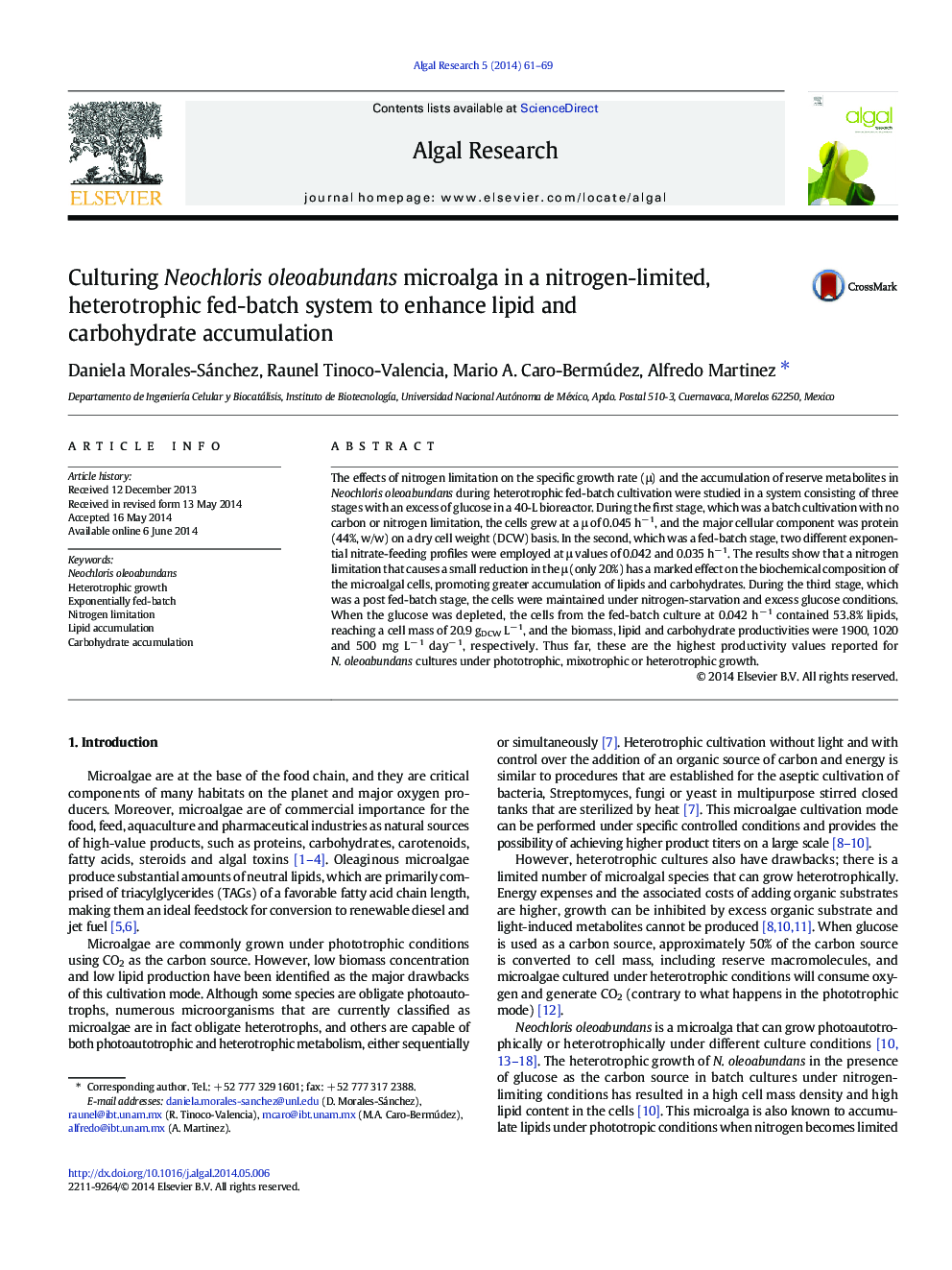| Article ID | Journal | Published Year | Pages | File Type |
|---|---|---|---|---|
| 1742090 | Algal Research | 2014 | 9 Pages |
•N. oleoabundans was grown in N-limited heterotrophic fed-batch cultures.•The exponential feeding strategy allowed to obtain high cell density mass.•Post-fedbatch from N-limited cultures at μ maximum promotes lipid accumulation.•N-limitation leading to 20% reduction in μ increased lipids and carbohydrates.•Cultures at μ 20% lower than μ maximum cause an increase in saturated fatty acids.
The effects of nitrogen limitation on the specific growth rate (μ) and the accumulation of reserve metabolites in Neochloris oleoabundans during heterotrophic fed-batch cultivation were studied in a system consisting of three stages with an excess of glucose in a 40-L bioreactor. During the first stage, which was a batch cultivation with no carbon or nitrogen limitation, the cells grew at a μ of 0.045 h− 1, and the major cellular component was protein (44%, w/w) on a dry cell weight (DCW) basis. In the second, which was a fed-batch stage, two different exponential nitrate-feeding profiles were employed at μ values of 0.042 and 0.035 h− 1. The results show that a nitrogen limitation that causes a small reduction in the μ (only 20%) has a marked effect on the biochemical composition of the microalgal cells, promoting greater accumulation of lipids and carbohydrates. During the third stage, which was a post fed-batch stage, the cells were maintained under nitrogen-starvation and excess glucose conditions. When the glucose was depleted, the cells from the fed-batch culture at 0.042 h− 1 contained 53.8% lipids, reaching a cell mass of 20.9 gDCW L− 1, and the biomass, lipid and carbohydrate productivities were 1900, 1020 and 500 mg L− 1 day− 1, respectively. Thus far, these are the highest productivity values reported for N. oleoabundans cultures under phototrophic, mixotrophic or heterotrophic growth.
Graphical abstractFigure optionsDownload full-size imageDownload as PowerPoint slide
